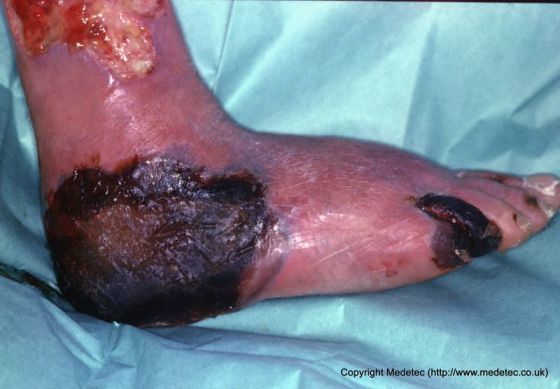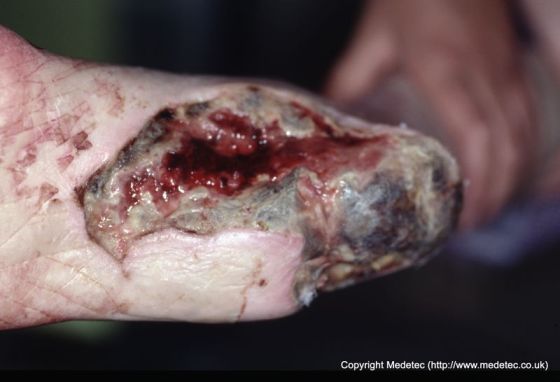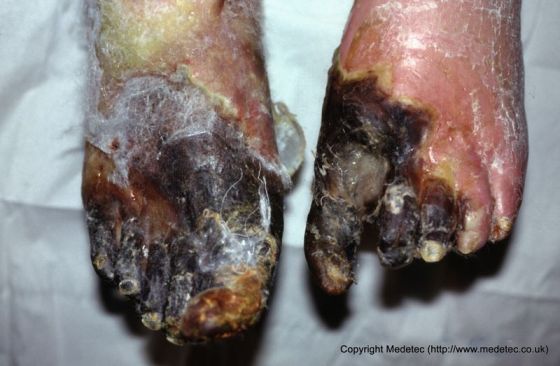Necrotic Wounds
Necrosis is the death of cells in living tissue caused by external factors such as infection, trauma, or toxins. As opposed to apoptosis, which is naturally occurring and often beneficial planned cell death, necrosis is almost always detrimental to the health of the patient and can be fatal. Typically, cells that die as a result of necrosis do not signal nearby phagocytes to ingest said dead cells, which leads to a build up of dead tissue and cell debris.
Necrotic tissue can delay wound healing, and it is often necessary for the devitalized tissue to be removed before any progress towards healing can be made. For this reason, it is often necessary to remove necrotic tissue surgically, a process known as debridement.
When substantial areas of tissue become necrotic due to lack of blood supply, this is known as gangrene.
Symptoms of Necrotic Wounds
There are two main types of necrotic tissue present in wounds: eschar and slough. Eschar presents as dry, thick, leathery tissue that is often tan, brown or black. Slough is characterized as being yellow, tan, green or brown in color and may be moist, loose and stringy in appearance.



Etiology
Necrosis can be caused by a number of external sources, including injury, infection, cancer, infarction, poisons, and inflammation. Black necrotic tissue is formed when healthy tissue dies and becomes dehydrated, typically as a result of local ischemia. Common causes of ischemia are diabetes or other metabolic disorders, or unrelieved local pressure that compresses soft tissue between a surface and underlying bony prominences (leading to the formation of pressure ulcers).
Treatments & Interventions for Necrotic Wounds
The following precautions can help minimize the risk of developing necrotic wounds in at-risk patients and to minimize complications in patients already exhibiting symptoms:
- Maintain moist wound environment to prevent dehydration and desiccation, and promote wound healing.
Treatment of necrosis typically involves two distinct steps. The underlying cause of the necrosis in wounds must be treated before the dead tissue itself can be dealt with. This can mean anything from administering antibiotics or antivenom to relieving pressure on the wound area to restore perfusion. After the cause has been addressed, the necrotic tissue will need to be removed. Depending on the extent of necrosis, this can mean surgical, mechanical, or enzymatic debridement of the wound, or complete amputation of the affected area.
References
ScienceDaily LLC. Necrosis. ScienceDaily. https://www.sciencedaily.com/terms/necrosis.htm. Accessed February 15, 2018.
Thomas, S. Surgical Dressings and Wound Management. Hinesburg, VT: Kestrel Health Information; 2012.
Image Source: Medetec (www.medetec.co.uk). Use with permission.







